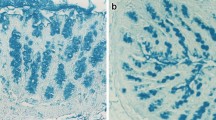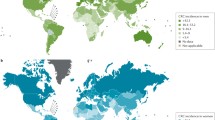Summary
Background Glutathione S-transferases (GSTs)* are an important class of phase II, predominantly detoxifying, enzymes. The supergene family is composed of several isoenzymes, hetero- and homodimers, with tissue specific distribution and levels of expression. The hypothesis is that a higher expression of individual proteins within a specific tissue may be associated with a decreased burden of exposure to reactive carcinogens and ultimately with a decreased cancer risk in this tissue.
Aims of the study Since nutrition is expected to contribute to the gene expression, it was the aim of this study to investigate the impact of dietary factors, especially resistant starch, and of the gut microflora, which may be influenced by diet, on the GSTs in colon cells of rats.
Methods For this, a technique using high pressure liquid chromatography was established with which for the first time GST isoenzymes were analysed in colon cells and compared to the levels of the corresponding proteins in the liver of the same rat.
Results It was found that colon cells contain mainly GST π and low amounts of μ but not GST α. In contrast, the predominant form of GSTs in the liver was α, then μ and hardly any π. Altogether, liver cells had approximately tenfold more total GSTs than colon cells. The feeding of “Crystalean”, a retrograded, high amylose starch which alters the fermentation profile and the composition of the microflora, led to higher levels of GST π in the colon. Furthermore, the comparison of GSTs in colon cells of germ-free rats revealed they were much lower than those observed in rats with conventional microflora.
Conclusions These findings clearly demonstrate that the gut bacteria, or their metabolic products, enhance GST expression. The studies support the hypothesis that nutrition – by affecting the gut flora – may induce this potentially protective and important class of phase II enzymes in important tumor target cells.
Similar content being viewed by others
Author information
Authors and Affiliations
Additional information
Rights and permissions
About this article
Cite this article
Treptow-van Lishaut, S., Rechkemmer, G., Rowland, I. et al. The carbohydrate crystalean and colonic microflora modulate expression of glutathione S-transferase subunits in colon of rats. Eur J Nutr 38, 76–83 (1999). https://doi.org/10.1007/s003940050047
Issue Date:
DOI: https://doi.org/10.1007/s003940050047




